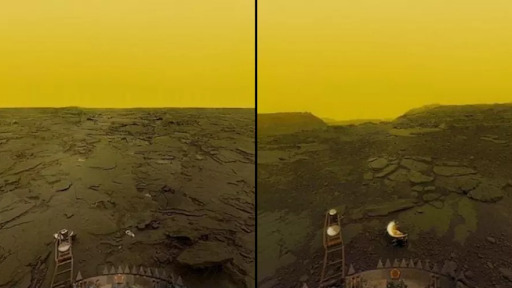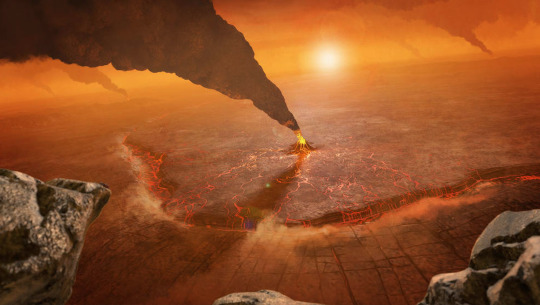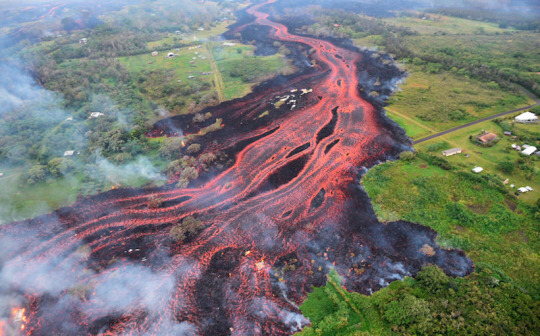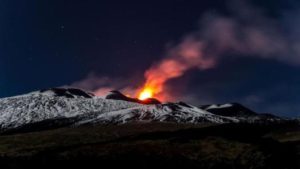#magmatic injections
Explore tagged Tumblr posts
Text
Tancítaro, deemed dormant, unveils its seismic activity through extensive research by Román Álvarez Béjar and team. Seismic swarms and magmatic injections challenge perceptions, emphasizing the need for vigilant monitoring of all Mexican stratovolcanoes.
3 notes
·
View notes
Text
Nasa picture of the day august 24 2010

#NASA PICTURE OF THE DAY AUGUST 24 2010 SERIES#
Scientists watch closely when volcanic materials reach this relatively dry layer of the atmosphere because particles linger much longer and travel much farther than if they remain in the lower, wetter troposphere. The eruption was powerful enough to inject volcanic material into the stratosphere, which generally begins above 15 kilometers (9 miles) in this part of the world. CALIPSO was launched in 2006 by NASA and France’s National Centre for Space Studies (CNES). “This is by far the highest volcanic plume we've ever measured with CALIPSO,” said Jason Tackett, a researcher at NASA’s Langley Research Center. Other CALIPSO data collected on January 15 indicates that a small amount of ash and gas may have reached as high as 39.7 kilometers (24.7 miles). The second image, based on data collected on January 16 by the Cloud-Aerosol Lidar and Infrared Pathfinder Satellite Observations (CALIPSO) mission, shows material from the eruption rising to an altitude of 31 kilometers (19 miles).
#NASA PICTURE OF THE DAY AUGUST 24 2010 SERIES#
(NASA builds and launches the GOES series of satellites for NOAA.) local time (04:00 to 07:00 Universal Time) as the volcanic plume expanded upward and outward over the South Pacific. The natural-color views from the satellite’s Advanced Baseline Imager were acquired between 5 and 8 p.m. NOAA's Geostationary Operational Environmental Satellite 17 (GOES-17) captured the images for the animation above. However, the involvement of water in the Tonga eruption may have increased the explosivity compared to a purely magmatic eruption like Pinatubo.” “That is comparable to Pinatubo and one of the largest of the satellite era. “The umbrella cloud was about 500 kilometers (300 miles) in diameter at its maximum extent,” said Michigan Tech volcanologist Simon Carn. As shown in the animation above, a vast plume of material created what volcanologists call an umbrella cloud with crescent-shaped bow shock waves and a vast number of lightning strikes. The sheer power of the eruption was quickly apparent in satellite imagery. Scientists affiliated with NASA’s Disasters program are now gathering imagery and data, and they are sharing it with colleagues around the world, including disaster response agencies. Several Earth-observing satellites collected data during and after the eruption. Relatively powerful blasts shook Hunga Tonga-Hunga Ha‘apai on January 13, but it was an even more intense series of explosions early on January 15 that generated atmospheric shock waves, sonic booms, and tsunami waves that traveled the world. The most recent activity began in late December 2021 as a series of Surtseyan eruptions built up and reshaped the island, while sending bursts of tephra and volcanic gases spewing from the vent. The volcano had sporadically erupted multiple times since 2009. Damage assessments are still ongoing, but preliminary reports indicate that some communities in the island nation of Tonga have been severely damaged by volcanic ash and significant tsunami waves. Editor’s Note: This story was updated on January 19, 2022, to add more context and quotes from scientists studying the volcano.Ī powerful volcanic eruption has obliterated a small, uninhabited South Pacific island known as Hunga Tonga-Hunga Ha‘apai.

0 notes
Note
“once”
*laughs*
The Siberian Traps aren’t even the largest large igneous province out there (although they are, indeed, very large). Try the Central Atlantic Magmatic Province for size, or Ontong Java Nui. We have a list of dozens of LIPs going back over a billion years, and yeah, they do have a tendency to coincide with mass extinction events. The Siberian Traps are something of an outlier in terms of severity; the theory is that they erupted in a region of the crust that was full of some very volatile hydrocarbons and the resulting injection of gases into the atmosphere was much worse than it otherwise would have been.
I also feel like I should point out that LIPs take a very long time to erupt. Tens of millions of years, usually, although by definition there needs to be a ‘main pulse’ of magma emplaced in less than 5 million years. It’s not all coming to the surface at once in a magmatic hell-world, it would be slower.
Venus has LOCKED tectonic plates??? How does that work? How are they even counted as individual plates if it’s the tectonic equivalent of Pangea?
it's not so much that Venus's tectonic plates are locked, it's more that it never had them in the first place!
which is a major surprise, actually, because Venus is the most Earth-like of the other planets in our solar system.
surprise?

"what," you may say, flailing in consternation, "about Mars?? why are we trying to colonize Mars if Venus is more Earth-like???"
and it's a good question! Venus IS technically more Earth-like in the sense that it's right next door, is a solid 80% the size of Earth, and has both a working atmosphere and a liquid mantle composed of molten rock, BUT- it's also important to note that Venus is the hottest planet in the solar system and it rains boiling sulfuric acid at almost all times! our first probes to the damn place actually melted. MELTED.

this is what Hell looks like.
BUT ANYWAY so Venus is the planet in our solar system that's the MOST physically similar to Earth, our dear mother who does not rain boiling sulfuric acid on our heads hardly at all ever, so it's kind of a shock that its geology is COMPLETELY FUCKING DIFFERENT.

see, Earth's outer crust is broken up into a series of mind-breakingly-massive tectonic plates that sort of skid around on top of the liquid mantle, slowly drifting in different directions driven by Earth's rotation and bonking into each other randomly like a 300-million-year-long Pinball tournament!
but on Venus, the entire outer crust is a single solid piece sitting on top of the liquid mantle, like the peel of an orange.

though not as good for you. because of the whole Boiling Acid thing.
and contrary to what you might think, this actually makes Venus a VERY VIOLENT place! the outer crust twists and deforms slightly as the liquid mantle spins under it, like a water balloon being flung repeatedly against a wall by a small child, but all of that force can't really be dispersed because the crust is a single solid piece of rigid rock!

so what happens is that this force builds and builds and BUILDS until Venus can't take the strain anymore and has a very volcanic tantrum about it.

unlike the rest of the solar system, the surface of Venus is made of relatively new and entirely volcanic rock- because the entire planet is basically having a planet-wide eruption event at all times, with multiple huge volcanos just spewing gigantic amounts of liquid rock everywhere like it's their damn job, to the point where Venus is just getting resurfaced like a McDonalds parking lot every epoch or so.
aren't you glad Earth doesn't do this? I am SO glad Earth doesn't do this.

(much, anyway)
uh anyway that's why we're trying to colonize Mars instead, and why plate tectonics are a GOOD thing! thanks for coming to my TED talk bye
#large igneous provinces are cool as fuck haha#im gonna have to dig out my planetary geology notes for the venus stuff but that can wait lol#geology#large igneous provinces
47K notes
·
View notes
Text
Volcanic carbon dioxide emissions helped trigger Triassic climate change
https://sciencespies.com/nature/volcanic-carbon-dioxide-emissions-helped-trigger-triassic-climate-change/
Volcanic carbon dioxide emissions helped trigger Triassic climate change

A new study finds volcanic activity played a direct role in triggering extreme climate change at the end of the Triassic period 201 million year ago, wiping out almost half of all existing species. The amount of carbon dioxide released into the atmosphere from these volcanic eruptions is comparable to the amount of CO2 expected to be produced by all human activity in the 21st century.
The end-Triassic extinction has long been thought to have been caused by dramatic climate change and rising sea levels. While there was large-scale volcanic activity at the time, known as the Central Atlantic Magmatic Province eruptions, the role it played in directly contributing to the extinction event is debated. In a study for Nature Communications, an international team of researchers, including McGill professor Don Baker, found evidence of bubbles of carbon dioxide trapped in volcanic rocks dating to the end of the Triassic, supporting the theory that volcanic activity contributed to the devastating climate change believed to cause the mass extinction.
The researchers suggest that the end-Triassic environmental changes driven by volcanic carbon dioxide emissions may have been similar to those predicted for the near future. By analysing tiny gas exsolution bubbles preserved within the rocks, the team estimates that the amount of carbon emissions released in a single eruption — comparable to 100,000 km3 of lava spewed over 500 years — is likely equivalent to the total produced by all human activity during the 21st century, assuming a 2C rise in global temperature above pre-industrial levels.
“Although we cannot precisely determine the total amount of carbon dioxide released into the atmosphere when these volcanoes erupted, the correlation between this natural injection of carbon dioxide and the end-Triassic extinction should be a warning to us. Even a slight possibility that the carbon dioxide we are now putting into the atmosphere could cause a major extinction event is enough to make me worried,” says professor of earth and planetary sciences Don Baker.
Story Source:
Materials provided by McGill University. Note: Content may be edited for style and length.
#Nature
#04-2020 Science News#2020 Science News#Earth Environment#earth science#Environment and Nature#Nature Science#News Science Spies#Our Nature#outrageous acts of science#planetary science#Science#Science Channel#science documentary#Science News#Science Spies#Science Spies News#Space Physics & Nature#Space Science#Nature
0 notes
Text
Scientists find evidence of how platinum metals form under 60 million-year-old Scottish volcano
Research carried out by scientists at Keele University, the University of Manchester and University College Dublin has shed new light on how precious metals are concentrated in igneous rocks. The solidified remains of sub-volcanic magmatic intrusions host the greatest concentrations of platinum-group metals in the Earth's crust, such as platinum, palladium and rhodium. Scientists refer to these bodies as layered mafic intrusions. Traditional models suggest that these layered intrusions form in large volume magma chambers, but this new research has found that it's more likely small amounts of magma is repeatedly injected into a crystal mush. The research, published in Nature Geoscience, demonstrates the case for re-evaluation of the long-held belief about how layered mafic intrusions are formed. The research involved carrying out a detailed study on an approximately 60 million year old extinct volcano on the island of Rum in northwest Scotland. Mineral crystals in the Rum intrusion were analysed using a novel microsampling approach, to identify isotopic variations of the element strontium. The measured strontium isotope variations provide evidence that crystallization of the minerals in and around precious-metal rich layers occurred within 10s to 100s of years. The data also show that layered intrusions such as on Rum form by repeated self-intrusion of magma during solidification rather than by protracted cooling from the bottom up and the top down. This new insight has important implications for the understanding of precious-metal mineralization in mafic igneous systems more generally. Keele University's Dr. Ralf Gertisser, Reader in Mineralogy and Petrology in Keele's School of Geography, Geology and the Environment, said: "The study significantly influences our understanding of how layered intrusions and the precious metal deposits within them form." Dr. Luke Hepworth, former Ph.D. student in the School of Geography, Geology and the Environment at Keele University, added: "There is scope for the model proposed here to be extrapolated to precious-metal-bearing rocks in larger, economically significant layered mafic intrusions such as the Bushveld Complex in South Africa and the Stillwater Complex in the U.S.." Dr. Brian O'Driscoll, Senior Lecturer in Petrology at The University of Manchester, said: "These new data highlight that the crystallization of layered intrusions and their associated platinum-group metal mineralization may be a dynamic and rapid process. It will be exciting to see whether these ideas can be extended to other economically-important deposits in the future." Provided by: Keele University More information: Luke N. Hepworth et al. Rapid crystallization of precious-metal-mineralized layers in mafic magmatic systems. Nature Geoscience (2020). DOI: 10.1038/s41561-020-0568-3 Image: Photomicrograph in crossed polars of precious-metal bearing peridotite. Note the optical zoning (light/dark bands) in the plagioclase (grey coloured mineral) in the central part of the image. The occurrence of this zoning was the focus of the study in question. The width of the image frame is 4 mm. Credit: Nat. Geosci. (2020). https://doi.org/10.1038/s41561-020-0568-3 Read the full article
0 notes
Text
Volcanic CO2 emissions triggered Triassic extinction
Volcanic emissions played a direct role in the extreme climate change that led to the extinction of almost half of all species at the end of the Triassic period 201 million year ago, according to a new study.
The amount of carbon dioxide released into the atmosphere from these volcanic eruptions is comparable to the amount of CO2 scientists expect all human activity in the 21st century to produce.
Researchers have long thought that dramatic climate change and rising sea levels caused the end-Triassic extinction. While there was large-scale volcanic activity at the time, known as the Central Atlantic Magmatic Province eruptions, experts have debated the role it played in directly contributing to the extinction event.
As reported in Nature Communications, researchers found evidence of bubbles of carbon dioxide trapped in volcanic rocks dating to the end of the Triassic, supporting the theory that volcanic activity contributed to the devastating climate change believed to cause the mass extinction.
The researchers suggest that the end-Triassic environmental changes driven by volcanic carbon dioxide emissions may have been similar to those predicted for the near future.
After analyzing the tiny gas exsolution bubbles preserved within the rocks, the team estimates that the amount of carbon emissions released in a single eruption—comparable to 100,000 km3 of lava spewed over 500 years—is likely equivalent to the total that all human activity during the 21st century will produce, assuming a 2 degrees C (3.6 degrees F) rise in global temperature above pre-industrial levels.
“Although we cannot precisely determine the total amount of carbon dioxide released into the atmosphere when these volcanoes erupted, the correlation between this natural injection of carbon dioxide and the end-Triassic extinction should be a warning to us,” says Don Baker, professor of earth and planetary sciences at McGill University.
“Even a slight possibility that the carbon dioxide we are now putting into the atmosphere could cause a major extinction event is enough to make me worried.”
Source: McGill University
The post Volcanic CO2 emissions triggered Triassic extinction appeared first on Futurity.
Volcanic CO2 emissions triggered Triassic extinction published first on https://triviaqaweb.weebly.com/
0 notes
Text
Some Evidences on the Relationship of Cyclic Development of Photosynthesis and the Earth's Crust Processes- Juniper Publishers
Abstract
According to the model of the global redox carbon cycle, there is a relationship between non-uniform movement of lithospheric plates and orogenic cycles of photosynthesis and climatic cycles. Some natural facts are given in favor of this assumption.
Keywords: Lithospheric plates' movement; Photosynthesis; Cycles; Organic carbon; Carbonates
Go to
Mini Review
Recently published model of the global redox carbon cycle [1] asserts that cycle is a recurring sequence of related processes on the Earth. The sequence is called the orogenic cycle and consists of short-term orogenic and long-term geosynclynal periods. The orogenic period of the cycle is characterized with intense volcanism, magmatism and mountain building. The geosynclynal period is characterized with quiet development of the Earth's crust when photosynthesis and weathering become dominant. It was assumed that orogenic and geosynclynal periods are the result of non-uniform movement of lithospheric plates. In orogenic period plates collide and the released energy intensifies thermochemical sulfate reduction in the subduction zone (zone of plates' collisions), where oxidation of sedimentary organic carbon occurs. Carbon dioxide, derived in oxidation, rises onto the Earth’s surface filling the "atmosphere-hydrosphere" system. Carbon dioxide injections evoke photosynthesis development which in subsequent geosynclynal period results in depletion of CO2 in the system.
In orogenic period such mechanism provides high concentration of CO2 in the "atmosphere-hydrosphere" system and higher temperatures accordingly on the Earth surface ("greenhouse effect"). According to the above mechanism, in geosynclynal period, a gradual decrease of CO2 concentration in the "atmosphere- hydrosphere" system due to photosynthesis results in the corresponding temperature fall, ending with glaciations. Entirely the mechanism leads to the correlation between orogenic and climatic cycles. Note, that the correlation between geological and climatic cycles has been discovered long ago and widely discussed [2-4].
The objective of our work is to find the experimental evidences of the existence of photosynthesis cycles. It gives us the possibility to use one more correlation with the usage of these cycles. As stems from the model, the periodic injections of CO2 into the "atmosphere-hydrosphere’’ system due to plate’s collisions, results in cyclic development of photosynthesis. The latter manifests itself in the form of differences in isotope composition of organic carbon in sedimentary rocks arising within the orogenic cycle. In orogenic period of the cycle the 12C enrichment of organic carbon is caused by the intake of "light" CO2, derived from oxidation of organic matter in subduction zone. By the end of the cycle the 13C enrichment of organic carbon is achieved because of two reasons. The first is Raleigh effect, which accompanies the depletion of CO2 in the "atmosphere -hydrosphere" system due to photosynthesis. The second reason is a consequence of the strengthening of photorespiration due to the oxygen accumulation in the atmosphere to the end of geosynclynal period. As shown before [5], photorespiration is followed by carbon isotope fractionation with isotope effect of opposite sign to that of CO2 assimilation. It means that intensification of photorespiration should be followed by enrichment of biomass with 13C which inherited by organic carbon after burial.
The isotope composition of coeval carbonates, like organic matter, shows the abrupt 12C enrichment in orogenic period and gradual 13C enrichment caused by Raleigh effect in the course of geosynclynal period. However, oxygen concentration doesn't impact on isotope composition of carbonates. The difference between carbon isotope composition of organic matter and carbonates, defined as s(6), is analog of 13C discrimination in photosynthesis in modern photosynthesizing organisms.
Thus studying cyclic development of photosynthesis using 8 13C or s values one should remember that carbon isotope composition is a function of two parameters, Raleigh effect and oxygen growth, whereas 13C discrimination in past photosynthesis depends only on oxygen concentration. To confirm the existence of photosynthesis cycles, let’s consider the isotopic variations of carbonate carbon in Precambrian [7]. (Figure 1) presents all the available data at that time. It was found great isotopic variations of carbonates which could be explained in the frame of the suggested model.
Two narrow peaks, in accordance with the model, correspond to short-term orogenic periods of two different orogenic cycles. Negative sign of the excursions means "greenhouse" periods of the cycles. Additional support for the explanation gives proximity of glacial episodes to to each peak. They are the Sturtian (ca. 780Ma) and Varangian (ca. 600Ma) correspondingly. In accordance with the model, strong cooling at the end of geosynclynal period, ending with glaciations, always precedes orogenic period of the subsequent cycle and are characterized with organic matter most enriched in 13C.
The study of carbon isotope composition of oils or its fractions gives another possibility to verify the cyclic character of photosynthesis. Indeed, if to accept that oil is derived from organic matter, formed during the orogenic cycle and, given that carbon isotope composition of oils (or fractions) differs from that of organic matter approximately by the same value, then isotopic variations of oils (or fractions) should reflect isotopic variations of the source organic matter. This assumption means that carbon isotope effects of organic carbon transformation and isotope effects of hydrocarbon migration from the source rocks to oil reservoirs are insignificant and (or) approximately equal. If so, carbon isotope composition of oils should reflect isotopic variations of source rock organic matter.
Taking this into account let's consider data from the works [8,9] (Figure 2). There are three successive steps of 13C enrichment of oils found in the studied geological period. In accordance with the model, they may mean the 13C enrichment of organic matter corresponding to the growth of the average oxygen concentration during three different orogenic cycles.
Additional confirmation of the above gives the dispersion of the 13C values appeared with the beginning of the Jurassic (Figure 2). It was the time when full occupation of the land by photosynthesizing organisms has occurred. Hence the variety of locations with different photosynthesis conditions has appeared and determined the dispersion of 13C values.
The data obtained by Hayes et al. [6] for great collection of samples of marine organic matter comprised wide time interval in Proterozoic and Phanerozoic. They found the recurring differences between carbon isotope composition of the organic matter corresponding to interglacial periods and to glaciations. Popp and co-authors [10] disclosed the coherence between carbon isotope composition of organic matter and climatic cycles.
Thus the facts support the model's idea that irregular movement of lithospheric plates generate orogenic cycles in photosynthesis and climatic cycles correspondingly.
To Know More About Journal of Oceanography Please Click on: https://juniperpublishers.com/ofoaj/index.php
To Know More About Open Access Journals Publishers Please Click on: Juniper Publishers
0 notes
Text
Europe's Most Active Volcano Is Sliding Into The Sea
Perched on the northeastern edge of Sicily, Italy’s Mount Etna is a hyperactive volcano capable of producing incandescent lava flows as well as explosive, lightning-surrounded pyrotechnics. It’s also sliding into the Ionian Sea—and a new study provides fresh evidence as to why.

It’s been known for some time that the so-called Roof of the Mediterranean has been on the move. Etna is not slipping quickly; on average, its migration is happening at a rate several times slower than the growth rate of your fingernails. But geologists have been hunting for the exact cause of the volcano’s motion, since it’s linked to the risk that the fiery mountain may suffer a catastrophic collapse. About a million people live on Etna’s slopes, and millions more reside on the coastlines across the Ionian sea. If part of the volcano near the shoreline becomes unstable and falls into the water, it could create mega-tsunamis that would devastate the shores of the eastern Mediterranean. “A massive collapse would be a disaster for a vast and densely populated area,” says Boris Behncke, a volcanologist at the Etna Observatory at Italy’s National Institute of Geophysics and Volcanology who was not involved in the latest work. (Find out why people chose to live in the shadows of active volcanoes.) Etna’s slippery slope For their new study, published today in Science Advances, a team led by Morelia Urlaub at the Helmholtz Centre for Ocean Research in Kiel, Germany, deployed several underwater transponders around Etna’s southeastern flank, which they suspect is the most mobile section of the mountain. These transponders contained pressure sensors that picked up on the slightest movements of the offshore flank. The devices also recorded their positions relative to each other, which meant that the team could detect movement of the flank compared to the more stable parts of the terrain. According to the team, their results show that gravity is the primary force causing this flank of the volcano to move. Magma rising inside the volcano also plays a role, but the team thinks it has less of an overall effect on Etna’s seaward slide. The new results “take us into the exciting realm of underwater monitoring for the first time at Etna,” says volcanologist John Murray of the U.K.’s Open University, who was not involved in the new work. Murray led a previous study that also looked at Etna’s slippage, and he says the new data are in line with his team’s observations, in that “magmatic forces are less important than gravitational spreading in the outward expansion of Etna.” Until recently, many experts thought that shallow magma injections within the fiery mountain were the primary drivers of this volcano’s displacement. Indeed, during some of Etna’s eruptions, monitoring devices have recorded movements of tens of feet. This makes sense: Rising magma can inflate parts of the mountain, adding extra weight to sections of it and causing structural weaknesses to appear. But Etna’s southeastern flank tends to slip in fits and bursts, and not all of that motion is linked to internal, molten turmoil. Keeping a close eye on things between April 2016 and July 2017, the latest monitoring effort detected one case of major movement around mid-May of 2017, when the volcano’s flank jutted forward into the sea by an inch or two. This activity coincided with the eight-day movement of a local fault. The team agrees that rising magma does play a role, because other flank accelerations match up nicely with unambiguous intrusions of new molten material. But the fact that such huge deformations are also occurring far from the magma-dominated summit suggests that gravity is the star of the show—a notion shared by other research groups. In April, Murray’s team reported on their work using hundreds of onshore GPS kits to assess Etna’s movement. Their data indicated that, from 2001 to 2012, Etna moved toward the Ionian Sea in a southeasterly direction at a rate of 0.6 inches (about 14 millimeters) every year. These researchers also suspect that gravity is the driving force, pushing Etna along on a layer of loosely packed sediments. Gravity will bring you down The April study suggested that the entire volcano was moving, but the new paper only looked at the southeastern flank. Still, with both studies in mind, “it seems that the consensus is shifting toward gravitationally driven sliding as the dominant mechanism” for Etna’s movement, says Urlaub. The new study’s interpretations are quite reasonable, Behncke says, although he adds that the situation is complex, and it’s likely that contributions from gravitational pulls and magmatic movements vary with time. Both factors are also connected, with gravitationally driven flank movements allowing magmatic intrusions to take place. “It's very difficult to make definitive statements unless the methods used by the authors are applied over a much longer period, encompassing a broader area,” he says. There’s also the question of whether the southeastern flank movement could one day turn into a catastrophic collapse. Urlaub’s data indicates that it’s possible, although she notes that there’s not yet enough information to say for sure. Geologists need decades’ worth of monitoring data before they can tell the difference between normal and fast slippage. There’s presently no sign of an imminent collapse on Etna’s slopes, but a lack of data on any similar incident means that there isn’t any way to tell when a major flank collapse might occur. No wonder, then, that Etna is one of the most heavily monitored volcanoes on Earth. Read the full article
0 notes